How High Speed Rail saves the environment
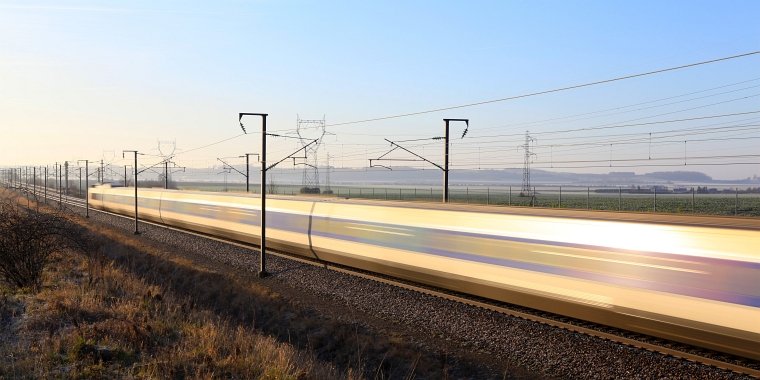
There are many reasons why India needs a network of very fast trains. This is not just because those gleaming, whizzing, shining marvels of technological wizardry are the most effective and efficient ways to move our large populations by cutting end-to-end travel times by as much as 80% as we saw in the last part, but also because they will save/heal the world and make it a better place for you and for me and the entire human race, though Michael Jackson probably didn’t have trains in mind when he wrote that song. We need to develop high speed rail as our default long-distance traveling option over road and air because above all, to mitigate that single biggest threat to our survival as a species (not our planet’s, the planet is fine, it is us who are fucked). We are being slowly choked to death by all those dark, evil invisible toxic fumes ranging from hydrocarbons to Sulphur and Nitrous oxides being belched out into our biosphere by fossil fuel combustion, starting with our children. Trains are what we need to clean up our air because they are much, much more greener and environment-friendly than airplanes and of course, cars. While “faster connectivity” should be the mantra and catchphrase, the ultimate aim of the high speed rail system should be to reduce the number of vehicles on our roads and planes in the sky. And HSR is really good at it, looking at examples from France/Belgium/UK, China and Japan. To save ourselves, along with stringent norms to curb automobile pollution, we need a roadmap leading to more sustainable modes of transport.
The Great Indian High Speed Rail Dream – Part 2
There is no need to go off the “global warming” tangent to make this case because there are much more easily visible examples around. Look at the air in a typical Indian city. Yes, you can literally see the air, thanks to all the carbon and other particulates floating around in it, produced along with other toxic fumes by the cars and planes you love so much, slowly choking you and your kids to death. I know the average (middle-class) Indian views environmental concerns as a nuisance hindering “progress” and “development”. Most do not care how much they pollute their own air, water or earth as long as they can achieve greatness and “prestige” of driving around in their own car, traveling by plane, dumping all the remnants of their great consumerist awesomeness – their plastic garbage – everywhere on earth, and letting the water run while they brush their teeth among other things. They believe that all the adverse effects of environmental pollution (if any) will not affect them for many reasons; because they are “good people”, nature will itself sort all that out, their bodies will get used to it, and of course, subsets of there is no such thing as global warming and other such deluded beliefs. LOL. Another widely held belief is that India does not produce “much pollution”, it is always China. And America.
Not really. Neither is among the world’s biggest polluted countries today. India has the ninth worst polluted air in the world and 13 out of the world’s 20 most polluted cities, including the most polluted city in the world (Delhi, of course). And the risks of breathing this “Carbonated/Sulphuric/Nitrous” air is not even enough debated or talked about in India at all. Air pollution is now India’s the 5th largest killer, sending 15 lakh people to their doom every year and is reducing life expectancy of half of our population by 3.2 years on average. A quarter of Bangalore’s children have asthma and half of Delhi’s children already have irreversible lung damage. It also cutting our crop yields by half. And contrary to popular belief, bad air can kill you sitting in your airconditioned German luxury car as much as it can kill that homeless child on the street, because, unfortunately you and them have to breathe the same air. Even if we save some money building superhighways and airports instead of high speed rail, the result will be an unhealthy population which is only half productive and will offset that money saved by the means of treatment for these diseases.
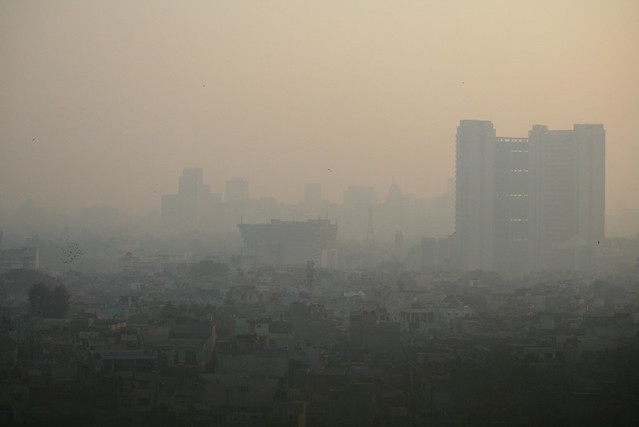
So what causes this? Other than the obvious toxic gases, Particulate Matter (PM) or particles of dust, soot, smoke etc swirling around in the air, all created by burning of fossil fuels. Among these, PM less than 2.5 micrometers in diameter (PM2.5 or “fine particulate matter”) are the biggest cause of human respiratory travails. Despite the name, there is nothing “fine” about these buggers. They are less than 1/30th the width of a human hair and are right now happily lodged deep within your lungs, forever, and they can kill you. No, you can’t get them out. These nanoparticles are air pollution, visible as the dark haze hanging over our cities. And no, the major source of India’s air pollution is not heavy industry, but large-scale automobile emissions and small-scale pollution caused by the burning of dung cakes and firewood for cooking (Asian brown cloud). Everything from autorickshaws and taxis using adulterated fuel and large number of diesel cars to India’s ancient-design trucks and buses which are nothing more than an engine, some steel beams, wheels and a ramshackle cab whose most advanced piece of technology is the steering wheel, are all putting out their shares in killing us. And we are happily obliging. We love our cars so much that we are willing to sacrifice our lives to drive them around. Is there a greater love? :’)
And to those who think all this is horse excreta, air pollution is driving away people from India. And their money. Sure, he is just a journalist, but westerners give great importance to all these environmental stuff, so if investors are scared away by our pollution, where will you get your startup funded from?
Aviation and Air Pollution
Most people tend to think cars as being the major contributor to air pollution. True. However, on absolute scales, airplanes are in fact more polluting than are vehicles! Pollutants coming out of jet engines and reaching the biosphere can kill you, directly, just like the actual airliner falling on your head will. 1640 people die every year in India from airplane emissions! Airplanes continuously fart out tons of Carbondioxide, NOx, Sulfurous gases and particulates, all injected nicely high up into the sky, into the upper atmosphere, blessing us with a blanket of smog high up in the sky. They also gulp expensive Aviation Fuel by the Kiloliters for which we need to shell out Uncle Sam’s Greenbacks by the brick, which do not really come cheap these days. Airplanes are just like flying refineries. Even those poetic looking contrails high up in the sky seemingly contribute to global warming. Today, less than 4% of all domestic Indian travel is by air, it will only get worse as the industry grows. It will be in everyone’s interest if travel we coax people to shift towards “greener” methods of travel, namely, trains. Check out the video below to see all the dirt belched out by airplane engines in the span of just 2:30 hours at Logan International, Boston, one of the just upper-medium busy airports in the USA. You can also see the haze hanging over the airport, as it is with most airports. And we are breathing in all that dirt.
Head-to-Head: Carbon Footprints of Passengers on Cars vs Trains vs Planes
Let us put all that theory into practice. It is always more fun that way. Let us see how much CO2 a passenger generates while using cars or trains or planes, and hence what their carbon footprint really are. Emission is always calculated per-passenger for any mode because emissions figures will vary according to equipment (aircraft/train type), distance and so on. For example a 747 emits 30 kg of CO2/km while a AVRO AJ45 emits only 7 kg.
However which you look, you can see that you can cut emissions remarkably by opting to take the train.
- An average aircraft emits 15 kilograms of CO2 per air-kilometer (Maths says so). Or, an average aircraft passenger generates (assuming 200 people per plane): 75 grams of CO2/km.
- An average car emits 640 grams of CO2 per land-kilometer (US Government says so) Or, an average car passenger generates (assuming 2 people per car): 320 grams of CO2/km.
- An average High Speed Train emits no direct CO2 whatever per any distance. Rate of emission is determined by the method used to produce electricity to run the train and this depends per country and per operator. For instance the emissions for a TGV passenger are a meager 1.73 grams of CO2 per km (Nearly all of France’s electricity is nuclear generated). Let us consider it to be 5 grams for our posterity factor.
- So, let us consider 800 passengers travelling 500 km by train, plane and car.
- One high speed train (TGV): 2000 kg of CO2 emissions.
- Two planes (B737-800): 30,000 kg CO2 emissions
- 400 fossil-fueled cars (family sedan): 204,800 kg of CO2 emissions.
- Taking the train cuts carbon emissions by 94% compared to the plane and 100% compared to the car.
This includes only carbon di oxide emissions and not other (more deadly) stuff like Nitrogen compounds, Hydrocarbons, particulate matters and so on. Now, let us take a real-life example comparing emissions by air travel (A320) vs high speed rail (Eurostar) vs car (middle class sedan) on most celebrated European high speed rail route for a London – Paris journey. All numbers are emission totals (carbon footprint) per passenger for the entire trip.
You can see for yourself how the train scores. You can do your own calculations here (only European cities supported). Here is another calculator for air travel carbon emissions for international travel (a Bombay-London passenger produces half a ton of CO2). Travel by air is the most high-profile carbon emission “sin” a person can commit, while of course, car emissions are suicide. On the London-Paris route, you can cut your carbon emissions by 90% by taking the train, with no much substantial time loss! Oh sorry, you will have to forego that “prestige” factor (yaar, I came by flight, you know). And trains also do not heat up the ground unlike highways do with all the asphalt and concrete. High speed trains are fast, look awesome are in-line with the “development” mantra Indians are so vigorously enamored with nowadays and are good for the environment too! What more do you want? There has to be reduction in burning all the fossil fuel if we want our children to grow up with lungs not filled with soot.
Shift From Roads
Picking up from the environmental aspect comes the biggest advantage of an HSR system (along with DFCs running 120+ kph freight trains): the reduction of our oil import bill, which was an insane Rs.672,000 crore in 2011-12. We are only too dependent on petroleum for our own good, which we need to reduce for our nation’s good. Building highways only encourage people to drive more and to move freight by our frightfully inefficient, polluting and gas guzzling ramshackle Leyland and Tata trucks. Instead, our aim should be to wean Indians away from the roads, reducing pollution and carbon output. And that is not all. Indian roads define lawlessness. We drive like rabid rabbits in heat, our lawless driving making our highways among the most dangerous in the world. There are simply no laws being followed here. Stretches of tarmac are seen as nothing more than open spaces on which any kind of motorized contraptions to be driven (or parked) any what way possible and the highest speed possible. Hundreds of us die on our roads every single day. If we won’t learn to drive like civilized human beings by ourselves, we don’t really deserve world-class roads and vehicles. And taking off trucks from the road will only boost the economy because of faster movement of goods at lesser fuel costs.
Beating Congestion
All advances in surface transportation from cars replacing horses to Interstate highways and yes, high speed rail were all devised as solutions to battle that evil scourge, the Voldemort of transportation; Congestion. For decades we built and built more and more roads and associated paraphernalia thinking that more it will solve the problem of congested roads, only to find that it only increased congestion as more roads caused more vehicles which caused more pollution which… oh well. There is only one way (at present) to beat congestion, and that is trains. Trains transport more people at the same time hence removes cars from the roads and planes from the sky (and ground) and do not get stuck on the rails one behind another as mentioned in the previous part. Transport by car, be it intra-city or intercity is highly inefficient in every way, not just in terms of human and environmental costs and also in terms of speed and space usage as it takes of too much space to transport too less people using too much fuel with drastic consequences and requires one person’s full attention the entire time. This is where and why high speed Intercity trains traveling at 320 kph (or more) are optimum for our country (see box below).
A 20 LHB coach Indian Railways train in all AC 3-tier configuration can accommodate 1440 people (72 per coach) and will be 500 meters long (including engine). Now, the same 500 meters can be filled with 125 Maruti Swift cars bumper to bumper, which will have a combined maximum carrying capacity of 500 people.
Trains are about maximum optimum usage of space. An Airbus 380 Super Jumbo, the largest plane in the world, has a capacity of 525 passengers while regular jets can carry around 200-300 people (average). A N700-Series Shinkansen Japanese Bullet Train can carry 1300 passengers. Indian HSR could be expected to carry upto 1000 passengers per train per trip. That is 5 Boeing 737s or 2 Airbus Super Jumbos. And that is also 30 buses or 200 to 500 cars. Less cars/buses = less pollution. There is no comparison here. Trains will free up our roads.
The Voluntary Switch to High Speed Rail
Many people reading this would have this doubt: “How can high speed trains solve the problem of pollution and congestion? These problems are prevalent in the cities and HSR is used for intercity travel.” Solid, valid question. But it will, because we are looking into the future. This is how. If we decide to not develop high speed trains, that will mean more highways, more cars and buses and trucks on them and more planes all of whose increase will continue in a vicious cycle. Pretty soon pollution levels will rise in the countryside too in addition to gridlocks as we will not be able to expand highways to meet traffic demands, in fact, it is already happening now. And all these cars and planes will mean more traffic in cities, of course, because that is where all these vehicles will ultimately end up. HSR will also spur development of city mass transit options which will of course go a long way in reducing city congestion and pollution, because mass transit is the ONLY way to save cities from traffic jams and pollution. The whole world (except the US) is moving towards mass transit and in a couple of decades trains will be running at more than 650 kph and if concepts like the Hyperloop take off, the airline industry itself will be dead. Unlike what us Indians like to believe, the self-driven fossil-fueled car is already as obsolete as are rotary phones and the fossils themselves, and will be dead in ten years, max. High speed rail and technology is the future, self-driven electric cars for urban transport and trains “flying” at the speed of sound for intercontinental transport. Both together will solve the congestion and pollution problems forever. Where will India be?
HSR will also take conventional passenger train traffic off the rails as seen in Europe, China and Japan. This, along with development of dedicated freight corridors will give more space for freight trains to run. A 58-BOXN wagon goods train can typically replace upto 100 trucks! HSR can also directly be used to move parcels as France has demonstrated. Delhi’s chronic pollution problem is attributed to thousands of those shit-colored ancient trucks (lorries) entering the capital everyday (night), blanketing the city with their adulterated fuel fumes. This is also why Volvo and other trucks are not successful in the long-distance trucking segment, they will not run on bad fuel. So, more high speed trains = lesser conventional trains = more freight trains = lesser trucks = lesser pollution.
What needs to be considered here is that most of our electricity is produced from coal-fired plants! We need to shut those down and shift to more sustainable, renewable sources like Solar, Wind and Hydro to power our HSR. Only then will the sustainability objective be achieved. But even then, it is still a misconception that
All this is good, but there is a reality to be accepted here: no one will ditch their cars and board trains just to save the world, even Micheal Jackson fans, me included. When the car replaced the horse as the primary transportation medium in the early 20th century (ironically, to reduce congestion and pollution), there was no compulsion or legislation enacted, people made the switch voluntarily. Give people a better alternative that addresses their needs in a more efficient way with some add-ons thrown in, and they will switch, like they did from horses to cars, from city centers to suburbs, from trains to highways, from ships to planes, from magazines to websites to apps. There are thousands of people in India including a lot many I know who would willingly switch to trains for their long-distance travel if the biggest shortcomings of our current rail system are addressed: speed, comfort/cleanliness and safety, which are exactly the efficient alternatives offered by HSR here, along with add-ons such as food, drink and entertainment, and a factor that is mostly not taken into account today but is of paramount importance to many people, which I call the “gadget time” (we can spend more time fiddling with our phones). All these are key for people to make the switch, which they will, given the right circumstances.

However, if high speed rail in India is limited to just a couple of selected stretches will remain what most people expect it to be: A high-maintenance showpiece, not unlike Bangalore Metro (of today). If HSR is to make all this impact it is expected to be as described here, it has to grow and evolve into a pan-India network with the support of local transit infrastructure. While it is said that HSR is a sure shot hit for distances below 500 km and fairly successful for under 700 km, in India it will be a major hit no matter on what route it is run on, given the pricing is right. China’s Beijing – Shenzhen HSR is 2208 km long and when completed till Hong Kong in 2017 will be 2230 km long. Trains take 10 hours and are huge hits. India could take a cue from this, because this, coupled with the general affinity towards train travel seen in our country, it wouldn’t be a stretch of imagination to say that high speed rail would be successful even for ultra-long distance services here.
How does this sound: Trains traveling at ~320 kph across the country, completing a Mumbai – Delhi journey in three and a half hours? Or a Kolkata – Delhi / Chennai trip in 4 hours? Bangalore – Mumbai and Hyderabad – Vizag in three hours? Ernakulam/Hyderabad – Bangalore, Chennai – Hyderabad, Lucknow – Delhi, Kolkata – Guwahati all in 2 hours each? Ahmedabad – Mumbai, Amritsar – Delhi, Jaipur – Delhi in 1.5 hours? Chennai – Bangalore in under an hour? Kanpur-Lucknow in 20 minutes?? Or even a 6 hour Bangalore/Chennai – Delhi or an overnight Trivandrum – Delhi journey? Board at Kolkata at 2100 after dinner, wake up in Mumbai the next day morning at 0700? Leave home from Dhanbad at 0830, reach your office in Kolkata at 1000? Mind-blowing? Can we do it? Of course we can do it. Will we do it? That is a completely different question though. However, before this can be made into a reality, we need to answer several questions that many people might have about high speed trains, including its viability, priority and so on. That, in the next part.
PS: Read this AMAZING (as always) post by Wait But Why that encapsulates all these points from a Tesla point of view.

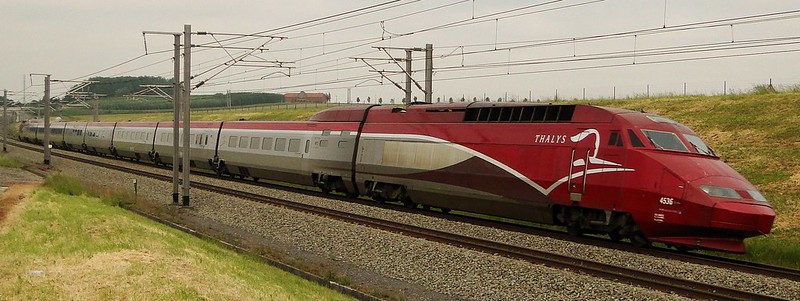



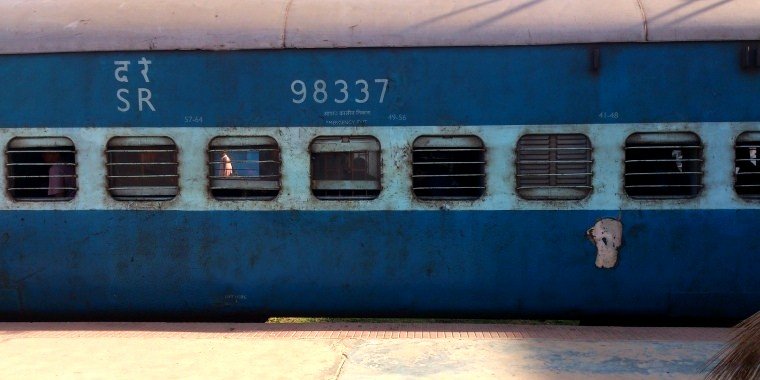
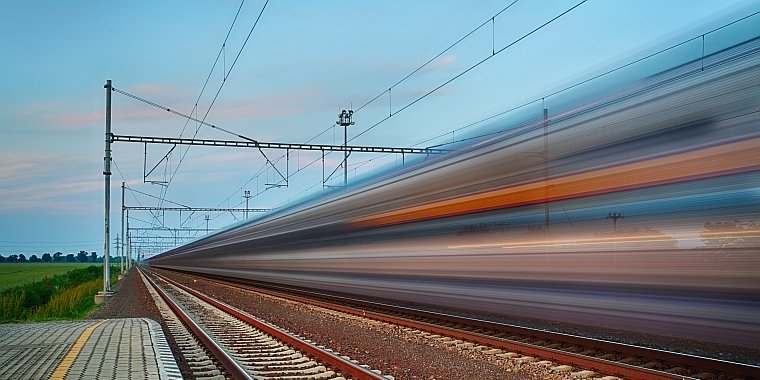

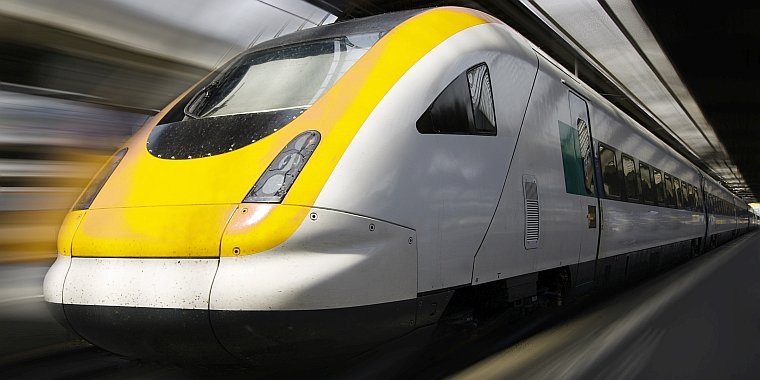
Let’s not follow the Chinese plan to the last mile- it hasn’t exactly delivered the benefits we expect of HSR. What it has done, with its prohibitive prices and by removing many regular trains from the network, is massively reduce the ridership of China’s regular trains. Those passengers, now without trains, take to the road, either in packed buses, or packed cars and motorcycles- and traffic jams build up- and so do fossil fuel emissions. The CRH trains often attract flyers, but not necessarily the general middle-class public. Most of their long-distance G-series trains run with plenty of empty seats, and plenty of berths in overnight D-trains are empty too.
Where HSR over long distances will be useful is in overnight services as long as Mumbai-Kolkata and Delhi-Chennai/Bangalore, the ‘diagonals’ of the proposed Diamond Quadrilateral. A flash 10-hour overnight train can definitely make a difference, saving costs for less-moneyed people from overpriced airlines and an extra night at a hotel. The proposed semi high-speed trainsets do the same along the sides of the Quad, while coached stock with locomotives at opposite ends are an affordable, slower alternative.
But it all boils down to costs. HSR has to be made affordable. It may be a one-class-only accommodation, they may need to run coach seat (chair car) services with extended legroom and maybe arm-room, to keep costs lower. The 3A/2A class needs an upgrade from the existing services, which the ideal HSR for India can provide. If we want to keep people off roads and petrol vehicles, keep the costs low, so that lower-income groups can stay in trains, and those who can spend more, opt for rail over flight.
Another aspect to look into is rail electrification of the conventional network- it is a paltry 36%- which makes most trains as guilty as the petrol-guzzling cars and airplanes. Electrification should be a priority, and a combination of coal, nuclear and solar/wind/hydel energy needs to be used to keep the supplies going. Let there be electricity across the grid first.